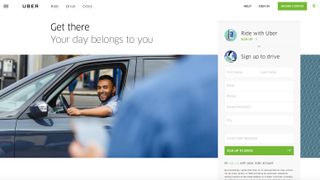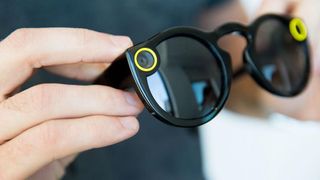5 top UX design trends for 2017
What does the coming year have in store for UX design? We find out...
2016 brought some great innovations to user experience – from anticipatory design to personalisation. So with the growing advancement of technologies available to more deeply engage with society, where is UX design heading in 2017?
Raffaela Rein, CEO and Co-Founder of online UX design school, CareerFoundry, predicts bold moves in UX in the coming months: From time-saving design, to smarter personalisation, metrics measuring life-impact, niche areas of specialisation, and UX as a management practice.
"For me, the growing area of UX is an opportunity for a complete mindset shift for companies: Away from selling products, towards selling experiences," Rein says. "That is the best way to build a sustainable competitive advantage."
01. Time-saving design

Great UX is intuitive and saves users time – often seen in linear designs that allow just one action to be taken at a time. Uber is a great example of this, making a clear transition through the booking system with simplicity and convenience. But with increasing technologies in the areas of chatbots and artificial intelligence, we’re going to see more and more interesting ways of time-saving design. Things like basic customer service interactions being handled by artificially intelligent chatbots will not just save users time, but also save the time of the company’s employees – time that can then be spent on innovation.
02. Smarter personlisation
Companies and users both love personalisation. But in 2016, personalisation of information brought some unpleasant surprises. Many people found themselves completely stupefied by the results of Brexit and the US election, as their social circles gave the perception that the whole world shared the same opinion.
While there was mixed reaction to the recommendation of articles blinkering a truly unbiased view, the next generation of personalised experience must change. Expect more options to be able to opt out of binary reporting, or consciously add in opposing opinions to places like Facebook’s news feed and news sites’ recommendation of articles.
03. Metrics beyond the interface
Traditional methods of measuring user experience include how long a user spends on a site, their movement through the pages, or where they drop off before purchasing. But as more and more experience goes beyond the digital – and the experience becomes the product – businesses will start tracking more experience based metrics to track the engagement impact, such as the positive contribution to the customer’s life.
Get the Creative Bloq Newsletter
Daily design news, reviews, how-tos and more, as picked by the editors.

Snapchat Spectacles is a great example of a company creating a seamless integration of a digital product into the user’s life; creating a fashionable accessory that streamlines the way users interact with Snapchat, without the need for the phone platform. It positively impacts the user by supplying them with a multi-purpose object that is a simple and easy way to share experiences with friends. Expect some interesting insights here.
04. Broader UX roles and specialisation
UX has always been a broad category. Even though many job posts still look for the UX/UI designer, companies will increasingly look for specialised talent. Whereas in the past, specialisation trended around UX disciplines such as CRO or IA, in 2017, specialisation will trend towards new technologies & industries such as virtual reality, artificial intelligence and industries like automotive or health and fitness.
As the experience becomes the product, companies must learn that UX is not just the role of the UX designer, but that everybody needs to learn it to take ownership of different goals during UX development. Everyone who plays a role in developing a user-facing element is part of the UX team.
05. UX as a management practise
Many companies are seeing the benefit and importance of UX design in product and service offerings for their customers. But what will become more prevalent in 2017 – and beyond – is the importance of UX design for companies’ employees. This practice will see leaders putting themselves in the shoes of employees and really going through their user journey: Critically questioning an employee’s experience of what happens when they bring forward ideas, start executing on them, and even what happens if they fail. This experience will have a big impact on motivating employees to bring innovation into all aspects of the business.
Related articles:

Thank you for reading 5 articles this month* Join now for unlimited access
Enjoy your first month for just £1 / $1 / €1
*Read 5 free articles per month without a subscription

Join now for unlimited access
Try first month for just £1 / $1 / €1
